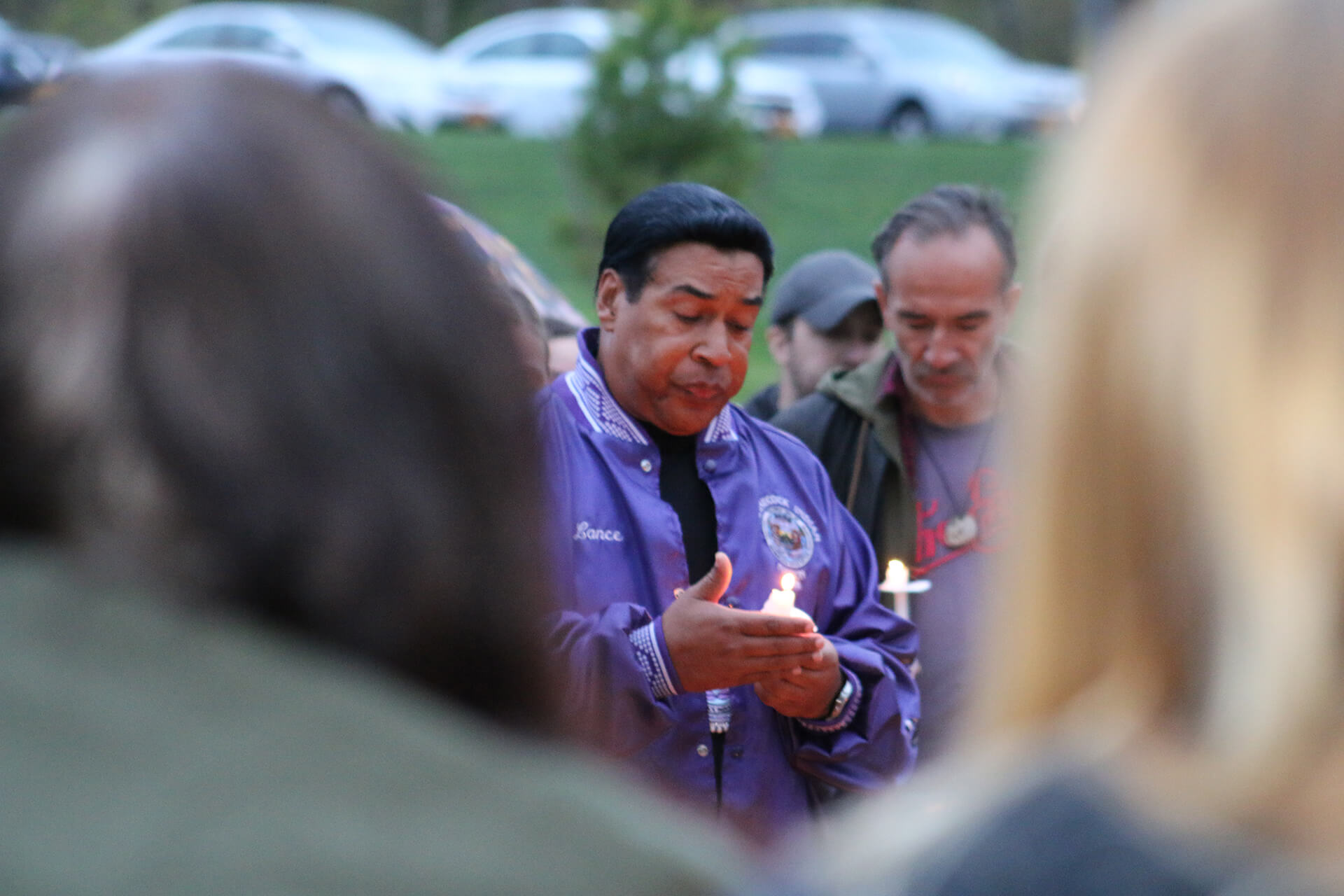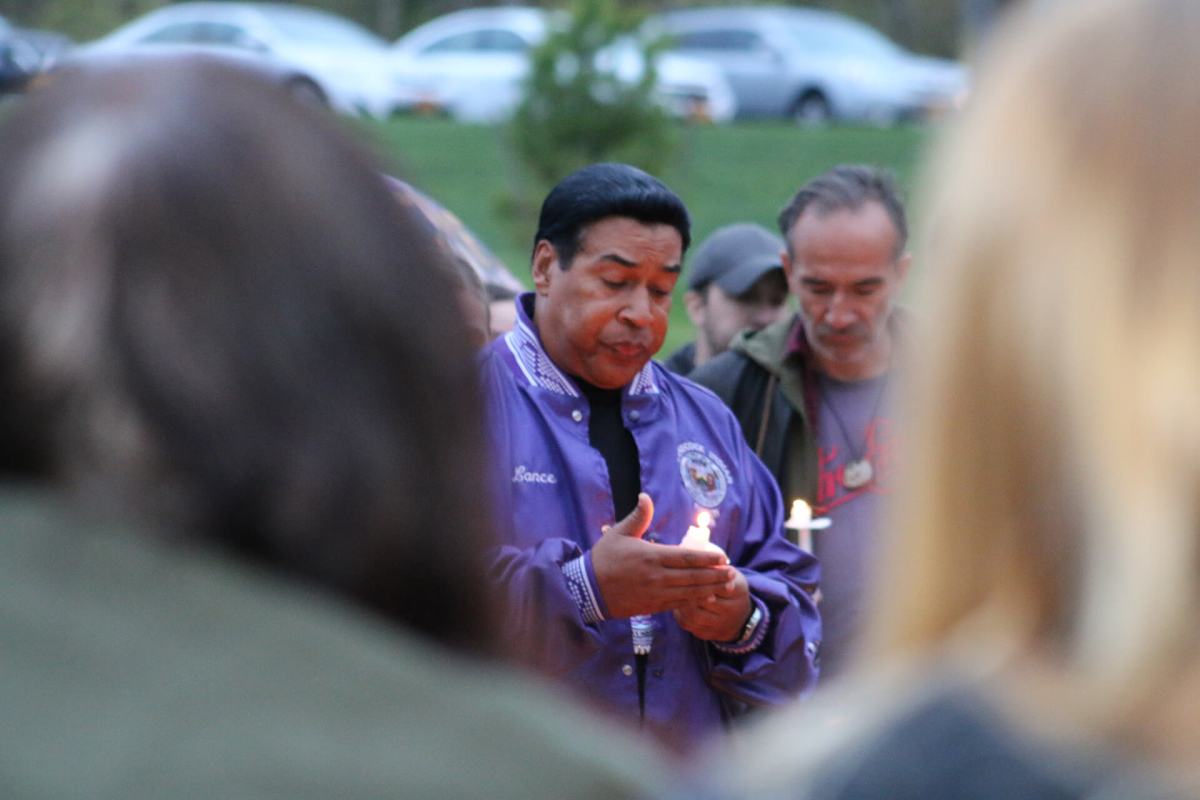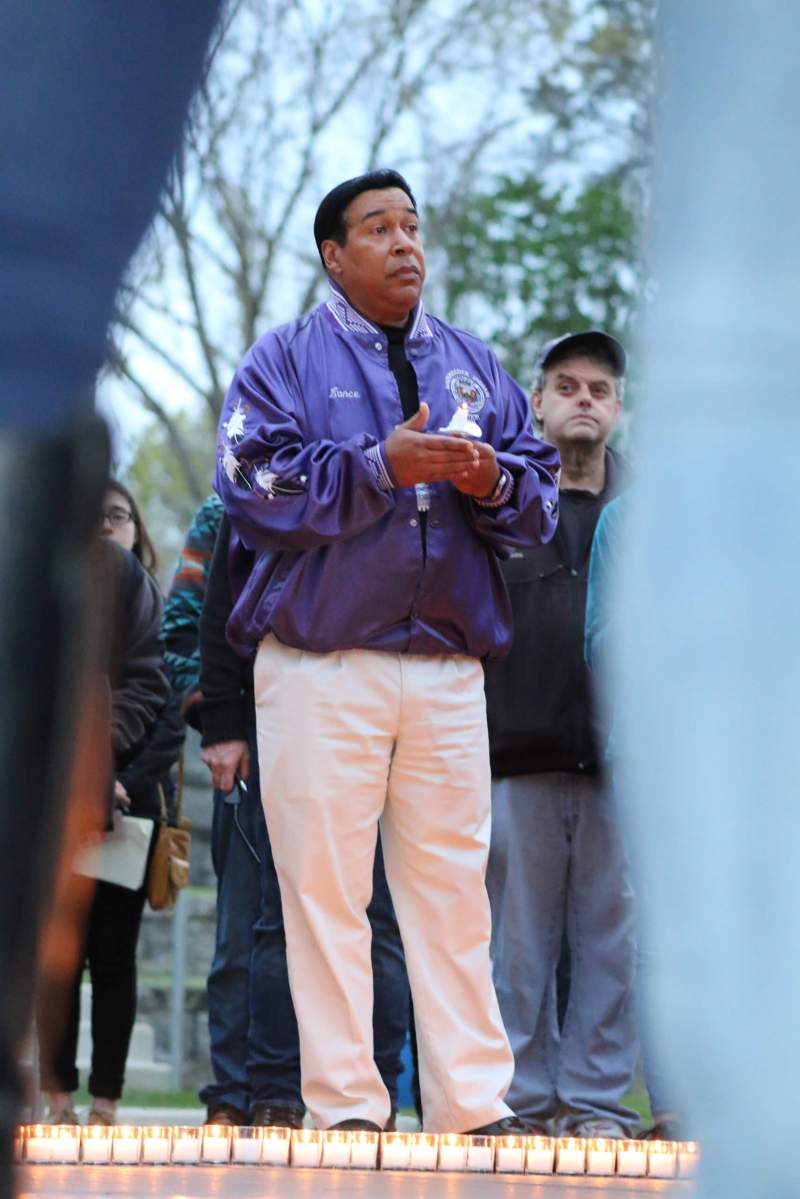Shinnecock Consider Opioid Suit

The Shinnecock Indian Nation is poised to join in a civil lawsuit against pharmaceutical companies that make and distribute opiates, Tribal Council Trustee Lance Gumbs said Saturday.
More than 100 tribes from every region across the United States have already filed their own lawsuits, joining in the Alliance For Tribal Justice, which includes a team of tribal leaders, attorneys, and litigators that specialize in large case and healthcare law.
Gumbs, who lost his son to an opiate overdose in September (see main story), said the tribe’s community, which consists of members who live on the reservation in Southampton and elsewhere, has experienced the deaths of almost 10 members over the last few years. The death toll has been double for other tribes, such as the Mashpee Wampanoag in Cape Cod, which lost almost 21 people, he said.
He said the reason behind the move to join in the legal fight is that the tribe has not only lost lives, but the opiate addiction epidemic has caused the tribe to incur increased medical and legal costs over the course of the opioid epidemic. Other areas that have been stressed include social services, child welfare, and loss of productivity.
“We feel that the pharmaceutical companies knew what they were doing and the cost to the tribe, whether it is my tribe or any of the other tribes, is getting up there,” Gumbs said.
There are extenuating circumstances that have arisen as a result of the crisis, such as in the case of a parent with an addiction, the tribe has to step in take care of the child, Gumbs noted. “That’s a cost to the nation. We are looking at this from a multitude of issues,” he added.
“All of that is costing the tribe money, or the tribes across the country money, and it’s something, as far as we are concerned, is unacceptable, and we just can’t continue to ignore what these pharmaceutical companies are doing — and they have admitted it,” he said, noting the pharmaceutical companies have admitted opiates are highly addictive.
After his son’s death, Gumbs, who is a member of the National Congress of American Indians, was approached by one of the tribal lawyers who sought the Shinnecock Tribe’s involvement in the legal fight. At the time, Gumbs explained, the alliance did not want to join in a larger lawsuit, such as the current Ohio-based multi-district litigation involving multiple local governments that is winding its way through the legal system.
“There wasn’t an Indian tract for us to go on, so we decided to create our own. There are 573 federally recognized tribes across the country, so we felt that if we could get enough tribes to join in this, we could have our own,” he said.
The tribe decided to join in the legal fight in March, and it has a meeting coming up where members will decide what course of action to take, and whether it will be in state or in federal court, Gumbs said.
“So, our philosophy is different, each tribe is going to assume their own area. They are going to stretch it out,” he said.
Gumbs said it is possible that the lawsuit could be joined with other litigation against the pharmaceutical companies, although that was not intended.
Any money obtained in a settlement could be used to fund prevention programs, treatment facilities, and after care.
There are a lot of great areas where the tribe sends their members when they need treatment, such as the Partridge House, which is a rehabilitation facility reflecting Native American spiritual healing beliefs that is run by the Mohawks upstate, but after care for patients in recovery is lacking when they return back home, Gumbs said.
“The problem is they go, they get this [treatment], but then when they come home, they are back to the same things,” he said.
peggy@indyeastend.com





